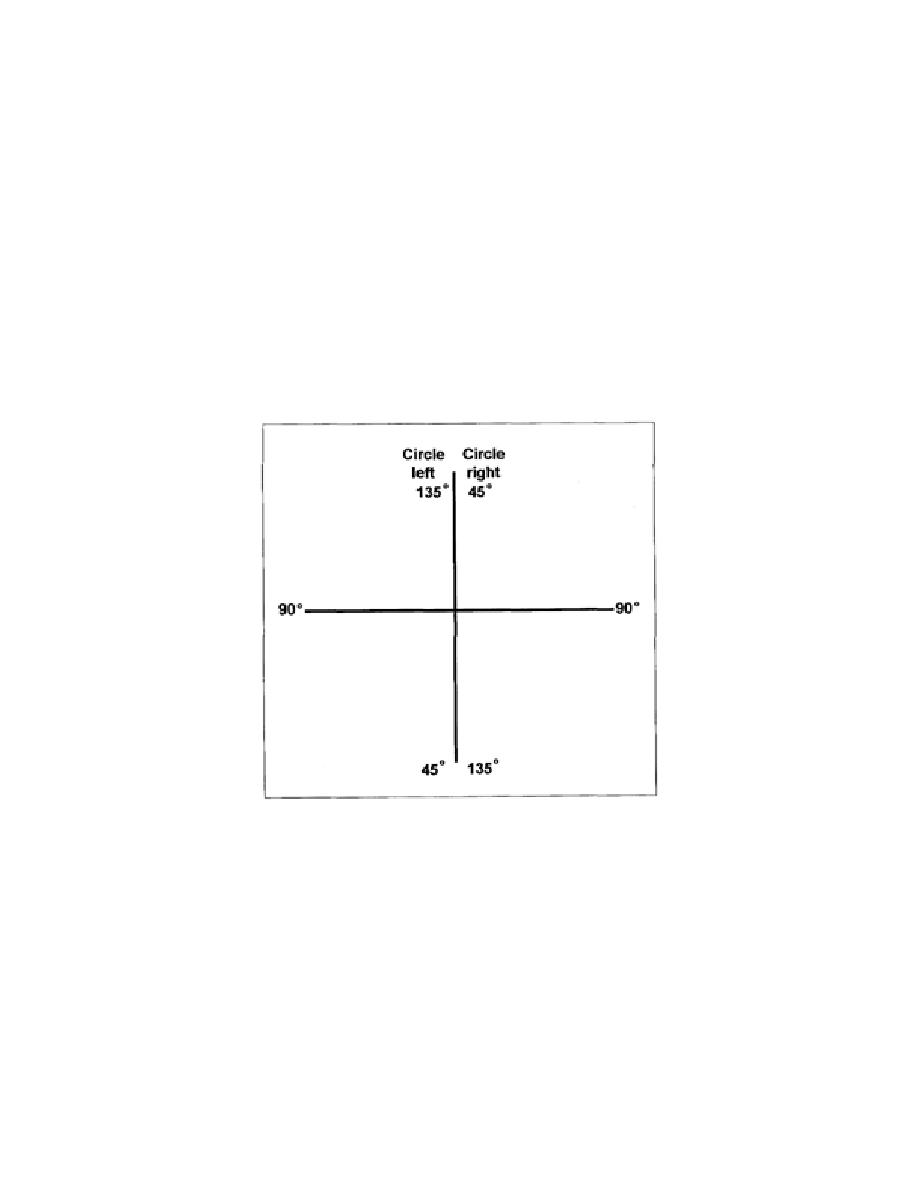
stations. However, since all stations cannot be occupied with instruments simultaneously, it in
recommended that zenith distances be observed at about the same hour. In this way, the observations
are made from both stations under conditions of refraction that are similar. It is especially important to
adhere to this procedure as closely as possible when making observations at night, as the effects of
refraction are large and variable. Combining day and night observations as reciprocals usually produces
poor results and should be avoided whenever possible.
d. Zenith distances should be observed on all intersection stations and computed as nonreciprocal
observations.
e. Due to the peculiar method used in the graduation of the vertical circle of the T-3, the manner in
which the zenith distance is determined is difficult to visualize and understand. To make the procedure
more understandable, a vertical circle is illustrated in Figure 4-13. Circle right or circle left refers to the
position of the vertical circle in relation to the observer.
Figure 4-13. Vertical Circle
The vertical circle is half numbered. The arrangement of the graduations for both the left and right
positions give the following formulas for the zenith distance and the vertical angle from the horizontal
plane.
(circle right + 90) - circle left
Zenith distance =
Vertical angle =
circle left - circle right
4-13. Recording Zenith Observations. A sample DA Form 5817 of recorded zenith observations is
shown in Figure 4-14. Refer to this figure and follow the procedures for completing the entries.
EN0593
4-28



 Previous Page
Previous Page
